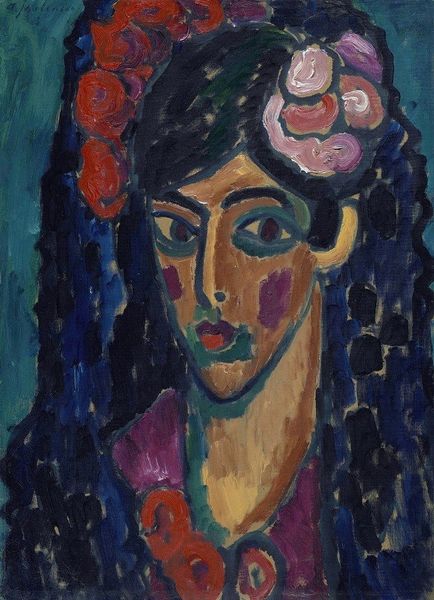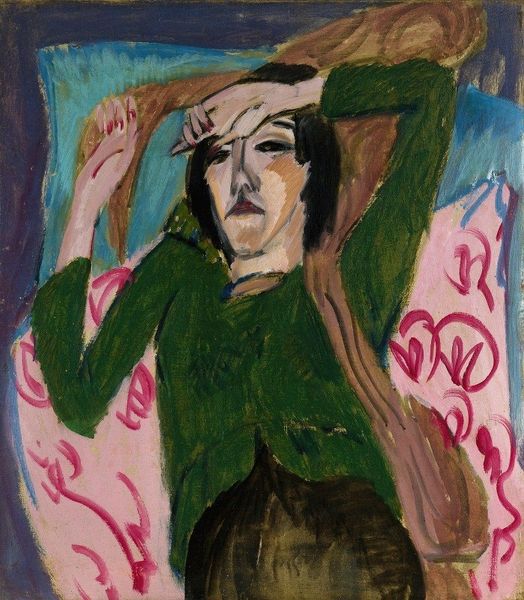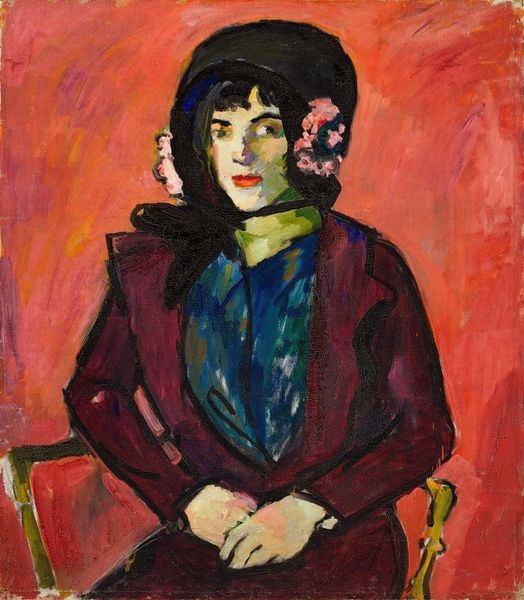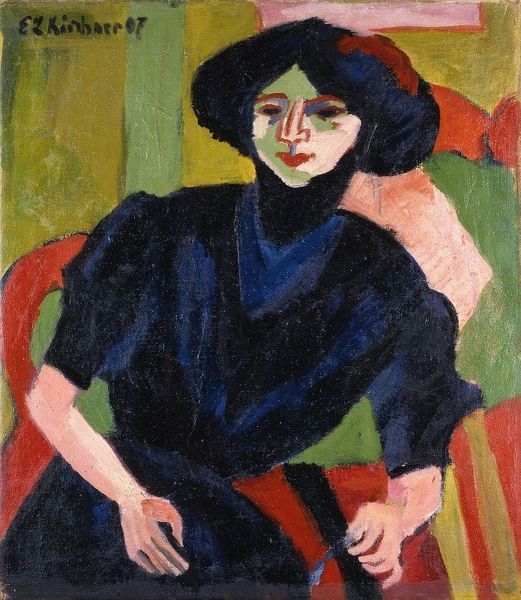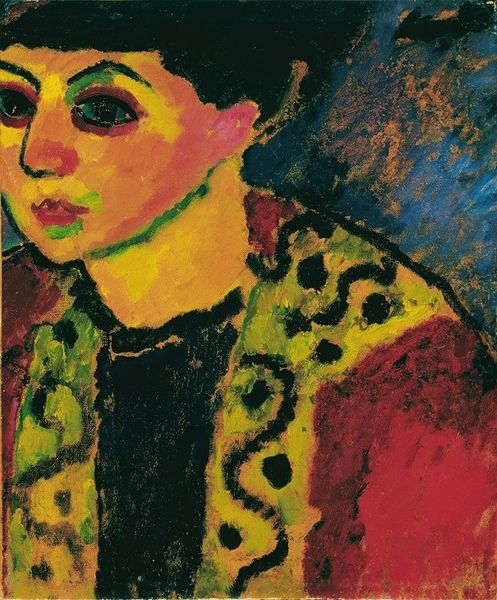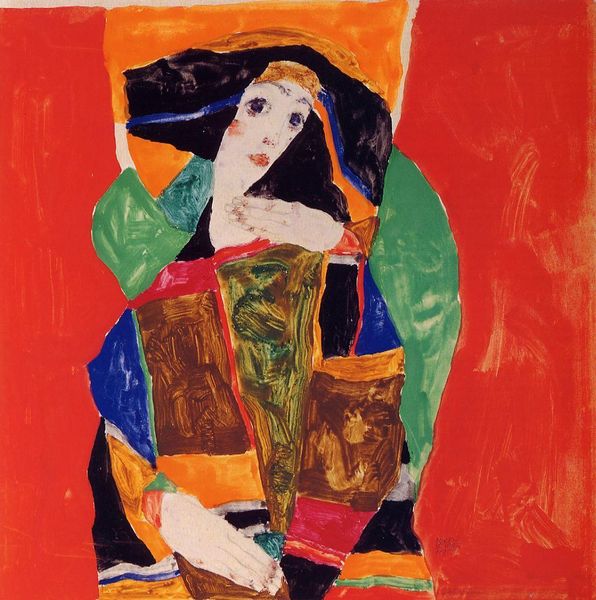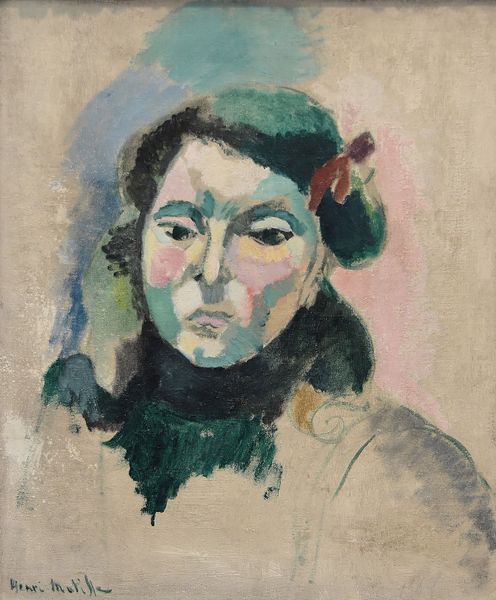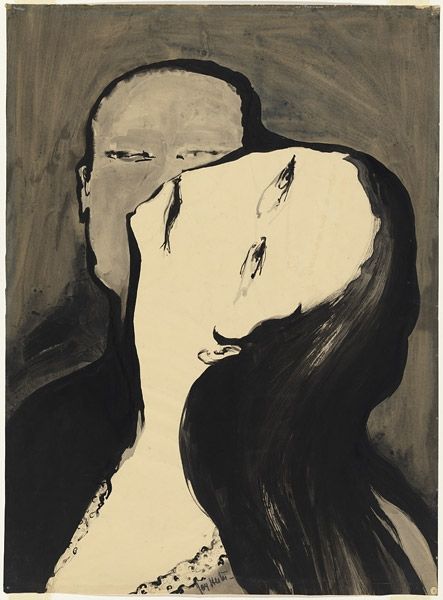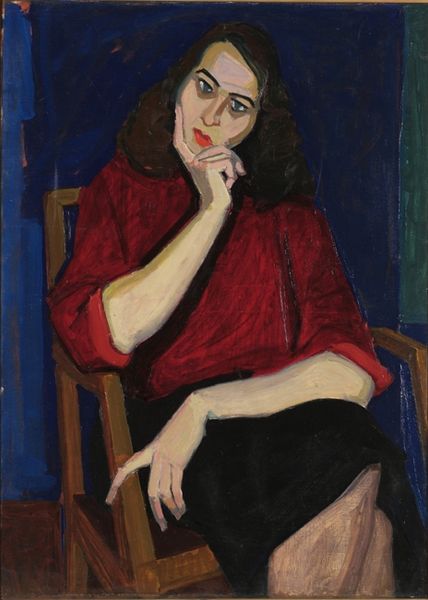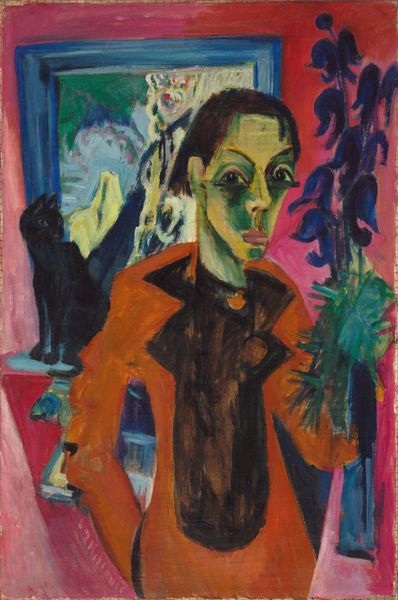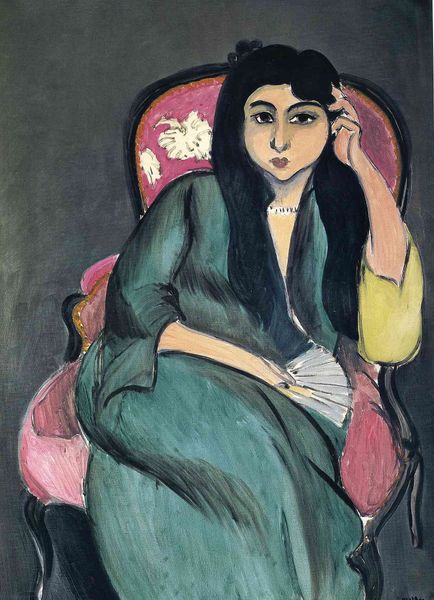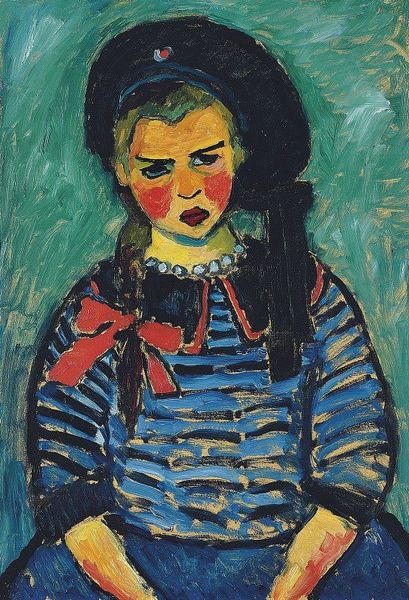
painting, oil-paint
#
portrait
#
figurative
#
self-portrait
#
vienna-secession
#
painting
#
oil-paint
#
figuration
#
oil painting
#
neo expressionist
#
expressionism
#
portrait art
#
modernism
Copyright: Public Domain: Artvee
Egon Schiele painted Mourning Woman in 1912 using oil on canvas. Schiele worked in Austria at a time when traditional artistic academies still held considerable sway. He and others in his circle challenged the established aesthetics, questioning the roles of art and the artist in society. In this portrait, the woman's sorrow seems to extend beyond personal grief, reflecting a broader sense of anguish. The distorted features and somber tones evoke a society grappling with rapid change and uncertainty. The color palette and angular forms create a disquieting effect. Schiele seems to suggest that the social structures of his time are themselves a source of pain. The institutional history of art provides insights into Schiele's choices. He rejected the conservative values of the Viennese art establishment and sought to express raw emotion and psychological depth, which was shocking to audiences at the time. To understand Schiele, we can turn to archival records, critical reviews, and social histories of early 20th-century Vienna. This research unveils the complex interplay between art, emotion, and society.
Comments
No comments
Be the first to comment and join the conversation on the ultimate creative platform.
